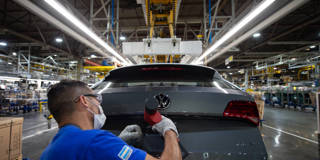OnPoint Subscriber Exclusive
The Big Picture brings together a range of PS commentaries to give readers a comprehensive understanding of topics in the news – and the deeper issues driving the news. The Big Question features concise contributor analysis and predictions on timely topics.

Double Trouble for Workers
Long before COVID-19 struck, disruptive technological change, especially automation, was already worsening the plight of ordinary workers. With the new Omicron variant spreading rapidly and labor-saving innovation continuing apace – often in response to changes wrought by the pandemic – fresh policy thinking is urgently needed.
In this Big Picture, Betsey Stevenson, a former chief economist at the US Department of Labor, notes that whereas the COVID-19 crisis has increased some workers’ bargaining power, ongoing automation threatens to erode it. Likewise, Robert Skidelsky, writing in 2019, urged policymakers not to ignore technological innovation’s disruptive short-term effects on workers. And MIT’s Daron Acemoglu points out that the US tax code is making matters worse for workers by encouraging businesses to automate excessively.
But, as Brigitte Granville of Queen Mary, University of London, notes, workers have been missing out for decades on most of the gains of economic growth – not least because digital technology has enabled large firms to suppress competition and depress wages.
What can be done? Harvard University’s Dani Rodrik highlights the need to enhance workers’ bargaining power and provide more good jobs, including by adapting technological advances to the workforce’s skills. And J. Bradford DeLong of the University of California, Berkeley, thinks a full recovery in post-pandemic employment will require – in addition to containing the coronavirus – a high-pressure economy, help for low-wage workers, and increased childcare provision.